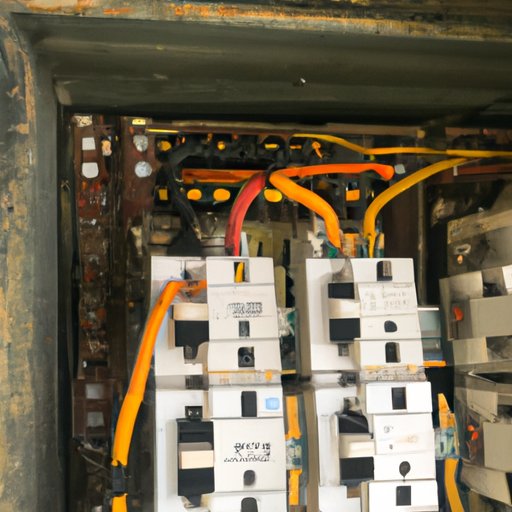Introduction
A circuit breaker is an essential safety device used in electrical systems. It’s designed to protect the system from damage caused by excessive current, overheating, and short circuits. When too much electricity flows through the system, the circuit breaker trips and turns off the power to prevent potential harm. But why does a circuit breaker keep tripping? This article will explore the most common causes of this issue and provide troubleshooting tips and solutions.

Troubleshooting a Repeatedly Tripping Circuit Breaker
If your circuit breaker keeps tripping, it’s important to troubleshoot the cause before attempting any repairs. The first step is to establish the root cause of the problem. This can be done by unplugging all devices connected to the circuit breaker and turning off all lights. If the breaker doesn’t trip, then you know the problem is with one of the appliances or lights that was plugged in. If the breaker still trips, then the issue is likely with the circuit itself.
Once you’ve established the root cause, the next step is to test the circuit breaker. If the breaker fails the test, then it may need to be replaced. If the breaker passes the test, then you can move on to examining the connected appliances and the wiring in the system.
Understanding the Reasons Behind a Frequently Tripping Circuit Breaker
There are several possible reasons why a circuit breaker keeps tripping. One of the most common is an electrical overload. This happens when too much electricity is being drawn from the system, usually due to multiple devices being plugged in at once. Another possible cause is a short circuit, which occurs when the hot and neutral wires touch each other, allowing excess current to flow through the circuit.
Ground faults are another possible cause of a repeatedly tripping circuit breaker. Ground faults occur when there’s a break in the insulation around the wiring, allowing electricity to escape into the ground. This can also happen if the grounding wire isn’t properly connected to the circuit breaker.
Exploring Common Causes of Circuit Breakers Tripping
In addition to the issues mentioned above, there are several other common causes of circuit breakers tripping. Power surges, for example, can cause the breaker to trip due to the sudden increase in voltage. Faulty wiring can also be to blame, as can poor maintenance. Overloaded circuits, loose connections, and worn-out components can all contribute to the problem.
How to Identify and Resolve Issues with Your Circuit Breaker
Once you’ve identified the cause of your circuit breaker tripping, the next step is to resolve the issue. The first step is to check the breaker itself. Make sure it’s properly connected and that the wiring is secure. If everything looks good, then you can move on to examining the connected appliances. Look for any signs of wear or damage, and make sure they’re not overloaded with too many devices.
The last step is to ensure all the wiring in the system is up to code. Check for any loose connections, frayed wires, or other signs of wear. If you find anything that needs to be repaired, contact a qualified electrician.

Tips for Preventing Circuit Breaker Trips
Once you’ve identified and resolved the issue with your circuit breaker, there are several steps you can take to prevent future trips. Unplugging unnecessary appliances can help reduce the load on the circuit, as can utilizing surge protectors. Installing GFCI outlets can also help protect against ground faults.

The Benefits of Regular Maintenance for Your Circuit Breaker
Regular maintenance is important for keeping your circuit breaker in good condition. Not only can it help identify potential problems before they become serious, but it can also reduce the risk of overload and improve safety. Regular maintenance can also help ensure the circuit breaker is operating efficiently.
Conclusion
When a circuit breaker keeps tripping, it’s important to identify and resolve the underlying issue. The most common causes of this problem include electrical overload, short circuits, and ground faults. Other possible causes include power surges, faulty wiring, and poor maintenance. To prevent future trips, it’s important to unplug unnecessary appliances, use surge protectors, and install GFCI outlets. Regular maintenance can also help reduce the risk of overload and improve safety.
(Note: Is this article not meeting your expectations? Do you have knowledge or insights to share? Unlock new opportunities and expand your reach by joining our authors team. Click Registration to join us and share your expertise with our readers.)
